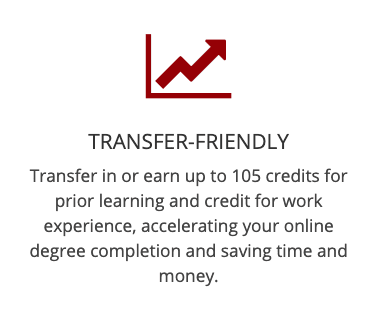Adult learners are attractive prospects to colleges and universities as the undergraduate pool continues to shrink due to demographic trends and a volatile global political climate. Adult learners are defined not just as students older than traditional undergraduates, but those students with adult responsibilities, like full-time jobs, active military status, or children.
Higher ed marketers seeking to target adult learners benefit from a thorough understanding of these students’ criteria when selecting college and university programs across the spectrum of undergraduate, graduate, and lifelong learning offerings. Adult learners are strategic with their time and resources, seeking to maximize their outcomes and their investments into their education and careers. Here are a few must-haves for adult learners as they select a higher ed program, and examples we like of higher ed marketing that emphasize these value propositions.
Flexibility
Adult learners juggle jobs, children, and their education all at once, so flexibility is of the utmost importance to them. This is one reason why online learning has been so popular with this demographic, even pre-Covid, but adult learners also pursue flexible learning formats, such as weekend and evening classes, blended courses that combine online modules with immersive weekend instruction, and self-paced courses.
Even within online courses, there are factors that limit flexibility, such as the need to schedule calls for team projects. Considering the needs of adult learners closely when placing an emphasis on their recruitment is a necessary component of developing higher ed program strategy and learning designs that marketers can promote successfully.
This pane of the eCornell landing page is a great example of leading with messaging around flexibility and convenience, noting that the program is fully online.

Transfer credit
Many adult learners, especially on the undergraduate side, have prior college experience and want to transfer in their credits to create a shorter path to their desired degree. Given the large amount of competition for adult learners in the higher education space, it is not enough to simply promise consideration of transfer credit at some point of the enrollment journey. In order to convert the maximum number of adult learners, institutions must create a path to projecting and, better yet, committing to an answer to how many credits will transfer when a prospect first engages with an admissions representative.
We like this copy on the UMass Amherst University Without Walls landing page, emphasizing to students that transfer credits are welcome and telling them exactly how many prior credits they can get for certain types of learning and work experience.

Career outcomes
Adult learners appreciate learning for learning’s sake, but the reason they are spending their time and money on continuing their higher education is, first and foremost, an investment into their future career. Adult learners want to know how your programs will set them up for promotions, desirable job changes, increased income, and leadership opportunities. They want to see rankings, job placement rates, and how your institution will help them build their network, so be sure to address these topics front and center on your website and across your marketing materials.
Another good example is the Harvard Business School Online homepage, which—as you’d expect from a business school—emphasizes the career impact of a degree.
 Colleges and universities looking to increase their enrollments of adult learners need to prioritize flexibility, transfer credit, and career outcomes in their program strategies and marketing. Once string value propositions have been developed, reaching adult learners with marketing that will bring strong conversion rates becomes much easier.
Colleges and universities looking to increase their enrollments of adult learners need to prioritize flexibility, transfer credit, and career outcomes in their program strategies and marketing. Once string value propositions have been developed, reaching adult learners with marketing that will bring strong conversion rates becomes much easier.
Does your school need help developing a strategy to connect with adult learners? Our full-service team can help with your higher education communications needs. Contact us today for a free consult and see how we can help. Schedule a consult now.
